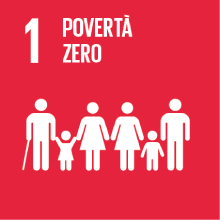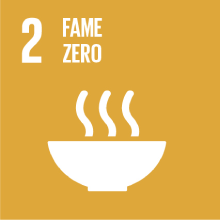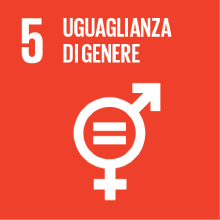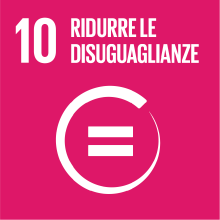ARTE MODERNA E CONTEMPORANEA DEL SUBCONTINENTE INDIANO
- Anno accademico
- 2024/2025 Programmi anni precedenti
- Titolo corso in inglese
- INDIAN MODERN AND CONTEMPORARY ART
- Codice insegnamento
- LM2570 (AF:444487 AR:288002)
- Lingua di insegnamento
- Inglese
- Modalità
- In presenza
- Crediti formativi universitari
- 6
- Livello laurea
- Laurea magistrale (DM270)
- Settore scientifico disciplinare
- L-OR/11
- Periodo
- II Semestre
- Anno corso
- 2
- Spazio Moodle
- Link allo spazio del corso
Inquadramento dell'insegnamento nel percorso del corso di studio
Tale focus da un lato intende costruire e consolidare le conoscenze di coloro che frequenteranno il corso sul Sud Asia moderno e contemporaneo, anche attraverso il confronto e la relazione tra le produzioni regionali con il più vasto scenario globale, ma al contempo intende far comprendere come lo studio del visuale possa costituire un cruciale supporto nell'analisi dei fenomeni storici, politici, religiosi e sociali moderni e contemporanei sudasiatici e himalayani.
Risultati di apprendimento attesi
Sarà possibile interpretare e descrivere tendenze e dinamiche artistiche dalla seconda metà del XIX secolo fino all'aprirsi del XXI secolo e le idee e concezioni ad esse sottese, e analizzare e riconoscere le opere nel loro contesto storico-culturale. Sarà possibile comprendere il ruolo delle collezioni museali di arte moderna e contemporanea nella promozione di artisti e movimenti, e riflettere sulle implicazioni politiche, sociali e religiose dello svilupparsi di movimenti e tendenze, così come delle scelte espositive promosse da musei pubblici e gallerie private. Sarà compresa l'importanza della produzione visuale e utilizzata come strumento indispensabile nello studio di società ed epoche. Saranno approfondite aspetti e tematiche trattate mettendole in relazione con le conoscenze acquisite nel precedente percorso formativo e durante altre attività formative, e saranno approcciate criticamente le teorie formulate da storici dell'arte e studiosi.
Prerequisiti
Contenuti
Testi di riferimento
1. One Book of Your Choice from the Following Selection:
- Furger, Alex R., The gilded Buddha, Basel Frankfurt 2017 (excerpts);
- Jackson, David and J. Jackson, Tibetan Thangka Painting. Methods & Materials, Boston 1984;
- Weingeist Rachel, Rebecca Bloom (eds.), Tradition Transformed Tibetan Artists Respond, Rubin Museum of Art, New York, 2010 [Selecting this book requires reading two extra articles from the lists below, along with the mandatory ones].
2. Mandatory Articles. All Four Must Be Read:
- Bagdel, Dina. “Packaging the Naked Buddhas. Authenticity, Innovation, and Cultural Imaginings in the Tourist Art of Nepal”. Ateliers d'anthropologie. 43,2016.
- Bellini, Chiara. “Tradition or Innovation? ‘Orientation’ in Tibetan Traditional and Modern Art” in R. Freschi (ed.) Past and Present of Tibetan Painting, 2010, Milano.
- Bentor, Yael. “Tibetan Tourist Thangkas in the Kathmandu Valley”, Annals of Tourism Research, Vol. 20, 1993
- Tythacott, Louise and Chiara Bellini. “Deity and Display: Meanings, Transformations, and
Exhibitions of Tibetan Buddhist Objects”. Religions 2020,11,106.
3. One Article of Your Choice from the Following Selection:
- Clark, Imogen. “Exhibiting the Exotic, Simulating the Sacred: Tibetan Shrines at British and American Museums”, Ateliers d’anthropologie, 43/2016.
- Jackson, David and J. Jackson. “A Survey of Tibetan Pigments”, Kailash, Vol. 4, No. 3, 1976.
- Reedy, Chandra L., “The Opening of Consecrated Tibetan Bronzes with Interior Contents: Scholarly, Conservation, and Ethical Considerations”, JAIC, Vol. 30, No. 1, Spring 1991.
- Reedy, Chandra L., “Religious and Ethical Issues in the Study and Conservation of Tibetan Sculpture”, JAIC, Vol. 31, No. 1, Albuquerque, June 3-8, 1991, Spring 1992.
- Slusser, Mary Shepherd, Nutan Sharma and James A. Giambrone. “Metamorphosis: Sheet Metal to Sacred Image in Nepal”, Artibus Asiae, 1999, Vol. 58, No. 3/4, 1999.
4. One Additional Article of Your Choice from the Following Selection:
- Bangdel, Dina. “Contemporary Nepali Art. Narratives of Modernity and Visuality”, in D. Shimkhada (ed. by). Nepal, Nostalgia and Modernity. Marg, 2011.
- Bellini, Chiara. “Tradition and Innovation. Western Influences in the artistic production of the Nepali Painter Mukti Singh Thapa”, in H. Fujita (a cura di), Art and Aesthetics in the Age of Globalization, Bologna, Osaka University: 2012.
- Burnett, Katharine P. “Tibetan Buddhist Art in a Globalized World of Illusion: The Contemporary Art of Ang Tsherin Sherpa”, Modern China Studies, Vol. 18, No. 2, 2011.
- Harris, Clare. “The Buddha Goes Global: Some Thoughts Towards a Transnational Art History”, Art History, Vol. 29, No. 4, 2006.
- Jackson, David. “Lama Yeshe Jamyang of Nyurla, Ladakh: the Last Painter of the ’Bri gung Tradition”, The Tibet Journal, Vol. 27, No. 1/2, S/S 2002.
- Lo Bue, Erberto. “Tshe ring dngos grub, a Ladaki Painter and Astrologer”, The Tibet Journal, Vol. XLII, No. 1, S/S 2017.
- Lo Bue, Erberto. “Lives and Works of Traditional Buddhist Artists in 20th Century Ladakh. A Preliminary Account”, in John Bray (ed.), Ladakhi Histories, Boston: Brill 2005.
- Lo Bue, Erberto. “Newar Sculptors and Tibetan Patrons in the 20th Century”, The Tibet Journal
Vol. 27, No. 3/4, A/W 2002.
- Magnatta, Sarah. “Disrupted Bodies and Regeneration”, Tales of Muted Spirits, Dispersed Threads, Twisted Shangri-La, 2023.
Additional Readings. Optional but Recommended for Further Exploration:
C. Bellini, Nel Paese delle Nevi. Storia culturale del Tibet dal VII al XXI secolo, Einaudi, Milano 2015.
A. Michaels, Nepal. A History from the Earliest Times to the Present, Oxford U.P., New York 2024.
Availability: Required articles and book excerpts can be accessed on Moodle.
Modalità di verifica dell'apprendimento
Modalità di esame
Metodi didattici
Altre informazioni
Obiettivi Agenda 2030 per lo sviluppo sostenibile
Questo insegnamento tratta argomenti connessi alla macroarea "Povertà e disuguaglianze" e concorre alla realizzazione dei relativi obiettivi ONU dell'Agenda 2030 per lo Sviluppo Sostenibile




